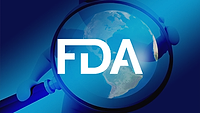Communicating During and Through a Food Recall

Ground beef. Cantaloupe. Bagged spinach.
And eggs…oh, yes…eggs. The news today is replete with stories of food recalls, but perhaps none more visible than the August 2010 Salmonella Enteritidis egg crisis that resulted in the recall of more than one-half billion eggs from states across the country.
Effective, responsible communication is key to maintaining trust in the food system, and a challenge for anyone who produces food is determining a strategy for communicating prior to, during and after a recall. So if you’re a farmer or a food producer facing a recall—or are a stakeholder in the food system interested in understanding more about what happens in these cases—read on to learn more about communicating from the front lines of the 2010 egg recall.
Get prepared. The most important thing a farm can do right now is preparation. A recall consumes time and resources and is not a good time to be just starting to think about farm communications. Do you have a crisis plan for a food recall, adulterated product or foodborne illness outbreak? Can you trace your product one step back and one step forward? Do you know your key media contacts? Is your list of customers up to date and can you reach them at any given time? Can you quickly and effectively articulate what the food safety and disease prevention protocols are on your farm? Is someone on your farm trained to serve as a spokesperson? If you answered any of these questions “no,” then you’re not ready.
Know your audiences. The scope of people to whom you must communicate during a recall is broad. It includes the media, consumers, your customers, suppliers, federal regulatory agencies and other public health authorities, your employees and local community leaders. Each of these audiences plays an essential role in the recall communications process.
Follow the lead of federal authorities. The federal agency leading the recall will have specific guidelines for communications. They include everything from what media outlets must be notified (e.g., The Associated Press must always be included) to what language must be used (e.g., symptoms of the type of foodborne illness) in materials. Be flexible and ask many questions. You should be informed on every action being taken by the agency, so that you are well prepared to discuss it with others as necessary. You are free to communicate beyond these parameters, but all communications must follow their lead.
Timing matters. You can’t wait forever to let the public know—notification is the right thing to do, and there are legal and reporting requirements that must be followed. More importantly, if the public and your constituents believe you held back information, your perceived delay will raise questions and compromise trust. On the flip side, ensuring information is accurate and current also is key. Tell what you know when you know it, and when appropriate and necessary to do so.
Be open and transparent. The public nature of a recall means that all information will eventually be shared publicly. There is no benefit to a farm in being less than forthright about what’s taking place. Always tell the truth. Engage with the media and with your customers. Don’t relinquish your position as the best source of information. You are the expert, and you should be the first point of contact. That’s part of demonstrating your commitment to food safety and to doing what’s right.
Recognize the story’s appeal. Threats to public health and food safety are hot topics. Coverage of your recall will range from the disinterested to the sensational—and everywhere in between. More than 80 reporters were covering the 2010 egg recall on a daily basis. Many showed up on-site at one of the affected farms. Media will use the highest numbers possible when reporting both the scope of the recall and the people potentially affected by it. They’ll be looking for the three ideal parts of a story—a victim (consumers), a villain (the farm) and a superhero (the U.S. Food and Drug Administration or other agency). It is frustrating, but it is reality. Again, don’t let others tell your story for you. Represent your farm at all times.
Plan for a long road back. The consuming public wants their food to be safe and free from disease. A recall puts that wish in jeopardy, and for a farm to regain the trust of its customers and consumers, a consistent, transparent effort of ongoing communication is required. Farms must demonstrate that they have cooperated fully with all regulatory officials, that they have implemented all needed corrective measures and that steps have been put in place to ensure that the situation is not repeated. Restoring trust and reputation takes time and resources, but is necessary for survival after a recall. Above all, farms must illustrate a clear change in course, a commitment to going above and beyond to ensure safe food is produced and an ongoing effort to do what’s right and responsible at all times.
Hinda Mitchell of CMA (an issues management and communications firm) provided crisis communications, media relations and strategic message development counsel during the 2010 national egg recall.
Looking for a reprint of this article?
From high-res PDFs to custom plaques, order your copy today!








